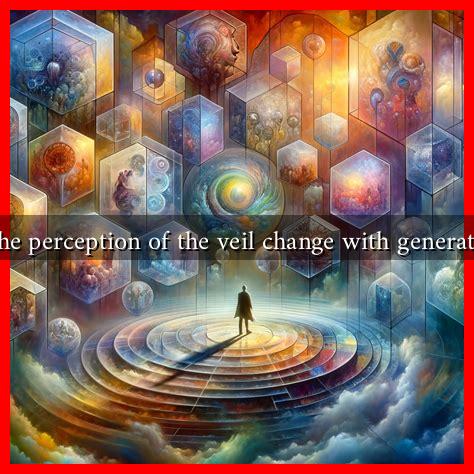-
Table of Contents
- How Does the Perception of the Veil Change with Generational Shifts?
- The Historical Context of the Veil
- Generational Perspectives on the Veil
- Factors Influencing Perception Changes
- Case Studies: Changing Perceptions in Action
- Statistics on Veil Perception
- Conclusion: Embracing Change and Understanding
How Does the Perception of the Veil Change with Generational Shifts?
The veil, a piece of fabric that has been worn by women across various cultures and religions, has long been a subject of debate and discussion. Its significance varies widely, influenced by cultural, religious, and personal beliefs. As societies evolve, so too does the perception of the veil, particularly across different generations. This article explores how generational shifts impact the understanding and acceptance of the veil, highlighting key factors that contribute to these changes.
The Historical Context of the Veil
The veil has been worn for centuries, often symbolizing modesty, religious devotion, or cultural identity. In many Islamic cultures, for instance, the hijab is seen as a religious obligation, while in Western contexts, it may be viewed through a lens of feminism or personal choice. Understanding the historical context is crucial for grasping how perceptions have shifted over time.
Generational Perspectives on the Veil
As with many cultural practices, the perception of the veil varies significantly between generations. Here are some key differences:
- Older Generations: Many older individuals may view the veil as a symbol of tradition and religious adherence. For them, wearing the veil can signify a connection to their cultural roots and a commitment to their faith.
- Middle Generations: Individuals in their 30s and 40s often find themselves straddling the line between tradition and modernity. They may appreciate the veil’s cultural significance but also recognize the importance of personal choice and autonomy.
- Younger Generations: The youth, particularly those in their teens and 20s, often approach the veil with a more critical lens. They may advocate for individual expression and challenge traditional norms, viewing the veil as a personal choice rather than a religious obligation.
Factors Influencing Perception Changes
Several factors contribute to the evolving perception of the veil across generations:
- Globalization: Increased exposure to diverse cultures through travel, social media, and education has led to a broader understanding of the veil. Younger generations are more likely to encounter different perspectives, which can influence their views.
- Feminism and Empowerment: The feminist movement has played a significant role in reshaping perceptions of the veil. Many young women now see the choice to wear or not wear the veil as an expression of empowerment rather than oppression.
- Political Climate: In some regions, political discourse surrounding Islam and the veil has intensified. Events such as the banning of the hijab in certain countries can lead to a backlash, prompting younger generations to defend the veil as a symbol of identity and resistance.
Case Studies: Changing Perceptions in Action
Several case studies illustrate how generational shifts impact the perception of the veil:
- France: The 2004 law banning conspicuous religious symbols in schools sparked significant debate. While older generations may have supported the ban as a means of secularism, younger Muslims often viewed it as an infringement on personal freedom, leading to increased activism.
- Social Media Movements: Platforms like Instagram and TikTok have given rise to movements where young women showcase their veiling styles, promoting it as a fashion statement and a form of self-expression. This contrasts sharply with older views that may see the veil solely as a religious obligation.
Statistics on Veil Perception
Recent surveys provide insight into how perceptions of the veil differ across generations:
- A 2021 Pew Research study found that 62% of Muslim women aged 18-29 in the U.S. view wearing the hijab as a personal choice, compared to only 45% of those aged 50 and older.
- In Europe, a 2022 survey indicated that 70% of young people believe that the veil should be a matter of personal choice, while only 50% of older respondents agreed.
Conclusion: Embracing Change and Understanding
The perception of the veil is not static; it evolves with each generation, influenced by cultural, social, and political factors. While older generations may view the veil as a symbol of tradition, younger individuals often see it as a matter of personal choice and empowerment. Understanding these shifts is crucial for fostering dialogue and respect among different cultural perspectives. As societies continue to change, so too will the narratives surrounding the veil, reflecting the complexities of identity, faith, and freedom.
For further reading on this topic, you can explore resources from the Pew Research Center and various academic journals that delve into cultural studies and gender studies.

